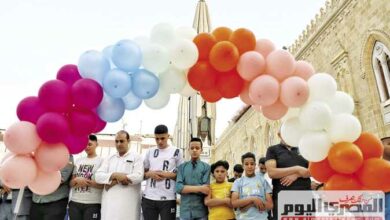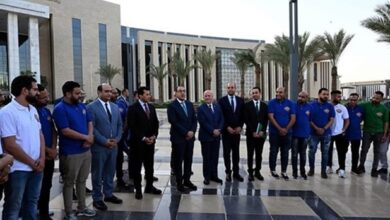
If you are not in Egypt during the holy month of Ramadan, definitely you’ll miss the 30 most spiritual days of the year. Though the core of Ramadan is the fasting, the country has its own traditional celebrations which consider one of its pure identities and heritage.
The decorations and the lantern
By walking down the streets you can find patchwork colorful decorations spreading along and between the buildings giving a warm feeling to the streets.

Moreover, one of the most popular features of Ramadan in Egypt is the lanterns (fanoos) which have been used traditionally as a lightning source, and then it developed to be an icon of Ramadan in Egypt and a custom that has never been abandoned.
Many say the fanoos originated in the Pharaonic Era, when ancient Egyptians were using it to light up festivals.
But it’s intrinsic link to Ramadan has no accurate interpretation. One story says that it originated during the Fatimid Caliphate which took place in Egypt in 969 when the people where greeting Al-Muizz li-Din Allah with lanterns celebrating his arrival at Cairo during Ramadan.
Another story says Fatimid Caliph Al Hakim Bi-Amr Illah had ordered all the sheikhs of mosques to hang the lamps illuminated by candles in order to light Cairo streets in Ramadan.
While third story says that during the era of Caliph Al Hakim Bi-Amr Illah, women were not allowed to leave their houses except during Ramadan, and then they had to be followed by a little boy carrying a fanoos made of copper.
The fanoos is popularly used all over the world for decorations not just for specific religious purposes.

Ramadan deserts
One of the Ramadan specialties are the popular honey-soaked pastries “konafa and “Qatayef” which are traditionally used to be made in homes, and now many different flavors and assortments are available in pastry shops.
One of the most interesting common scenes in Ramadan is to watch the konafa maker making raw konafa. Standing behind a simple furnace made of clay, the man swirls the dough, round and round in a huge round open oven, cooking the fine, noodle-shaped dough.
Qatayef is a kind of dumpling sweet traditionally stuffed with various types of nuts. Currently there are many types of the stuffing including chocolate and cream. It dates back to the Fatimid era which was prepared by street vendors as well in households.
“Mesarahaty”: The Night Caller
With knocking a traditional drum, the mesaharty has the task of walking around the streets waking people up for the “sohour”, which is the meal taken before the break of dawn before the beginning of the day's fasting.
In some small villages he may even stand in front of each home and call the residents by their names in order to wake them.




